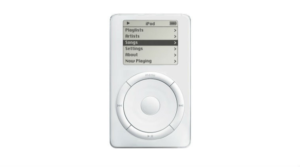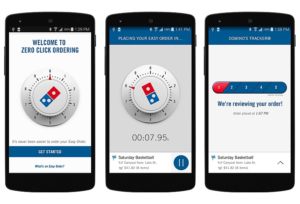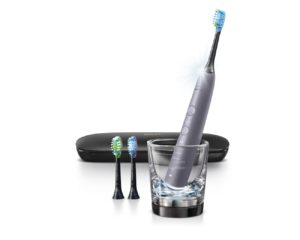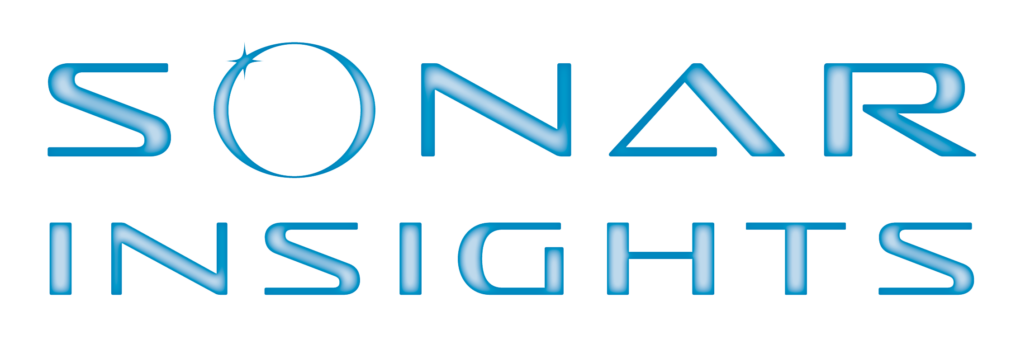The path to enlightenment isn’t always a straight line. The same can be true for gathering the insights you need to transform your business.
Everyone’s looking for insights
How many times have you heard these questions at your office or organization?
- What should we do with our business?
- How do we sell this new product?
- What do our customers want?
- How do we penetrate the market and beat out our competitors?
- What should we be charging?
When companies ask these questions, the go-to answer is often to do some research and find some answers. That may seem simple to do. But as we dig into doing research, more questions seem to pop up:
- Where do we start?
- Who do we need to talk to?
- What should we ask?
- How do we find the answers?
- How do we know when we have the right answers?
Your first reaction may be to look on the internet and type in some questions that pop into your mind. You hope to find a linear path to answer your questions. The ideal would be that those answers are turn-key solutions and you can put them in place today. If only it were that simple.
Insights aren’t linear, nor should they be
The truth is that finding easy answers on the internet isn’t likely. Seeking insights to questions isn’t linear because your mission, values, offerings, and goals are unique to your business. The fact is that the insights you seek aren’t buried in top ten lists or market research reports. Great insights can come from anywhere. They can come from the past, present, or foreseeable future. Sometimes from direct or indirect feedback from customers, consumers, or influencers to your market and offerings. Or they can come from industries that behave the same or complementary to your business. They may even come from articulated but unsolved needs or needs that remain unarticulated.
Insights are all around us. The crux is identifying what you want to find out, why you need to know it, and how those insights will manifest in your business strategy and tactics for growth.
Insights from the past and future can inform the present
Remember the Back to the Future movies? Marty McFly zips to the past as well as the future, careful to observe and understand what happens in both timelines. By doing so, he can ensure his present stays intact. The principle to learn is that gathering insights from both the past and future can have an impact on the present.
As much as we’d like a time machine, especially one made from a DeLorean, we don’t have that luxury. But business owners, leaders, and marketers can still look to the past as well as the future to shape the present. We need to understand what has happened in the past in our business, gather intel on others who have tread a similar path, and look at trends to see how the future could look.
 A great example of this is the iPod. When Apple created the iPod, they had the luxury of learning from their predecessors. The Sony Walkman digital player was already in existence, having been developed and sold in the late 90s. It was able to play mp3 format music from various sources. The only problem: you had to buy or download an entire album and store it on your player.
A great example of this is the iPod. When Apple created the iPod, they had the luxury of learning from their predecessors. The Sony Walkman digital player was already in existence, having been developed and sold in the late 90s. It was able to play mp3 format music from various sources. The only problem: you had to buy or download an entire album and store it on your player.
Looking at the past players and their issues, Apple got to work. They came out with their iPod with a much simpler design using their patented flywheel. But that wasn’t all.  They looked at consumers spending $15 for an album when they only listened to two or three songs. Apple realized that the days of buying albums were over. Their solution was the Apple Music Store. Consumers bought individual songs, stored them on their accounts, and owned them forever. Apple became the market leader by learning from the past and recognizing the future.
They looked at consumers spending $15 for an album when they only listened to two or three songs. Apple realized that the days of buying albums were over. Their solution was the Apple Music Store. Consumers bought individual songs, stored them on their accounts, and owned them forever. Apple became the market leader by learning from the past and recognizing the future.
Insights can be directly collected but counterbalanced with indirect insights
We all know the phrase, “straight from the horse’s mouth”. It means you should talk to the person most involved if you want an informed answer. In the business world, this means going to your customers and asking what they want. This is a great strategy, but it depends on what your question is. If you want to measure customer satisfaction or get incremental improvements on service, ask your customers. But customers don’t always know what they need. As Henry Ford said, “If I’d asked people what they wanted, they would have said a faster horse.”
But if you’re looking for massive improvements or insights into new product development and markets, you may want to look beyond your customers. Asking indirect customers, consumers, or influencers can shed light on new things. By talking to people on the periphery you can gain insights to build bigger, better, and bolder ideas for current and new customers. That’s the story of OXO.
 OXO manufactures everyday household utensils and gadgets like can openers, pot grips, and ladles. We all take these everyday products for granted. But OXO has an insightful method for designing products. Their goal is to produce the most comfortable and innovative set of utensils and gadgets possible. How do they achieve this goal? OXO gathers insights from people who don’t typically cook: children, the elderly, and those with physical limitations. By doing this, OXO has gathered insights on ergonomics, size, usage, and other factors to make products that fulfill a market need. And now these products benefit not just everyday consumers but also those who didn’t have the opportunity to cook before.
OXO manufactures everyday household utensils and gadgets like can openers, pot grips, and ladles. We all take these everyday products for granted. But OXO has an insightful method for designing products. Their goal is to produce the most comfortable and innovative set of utensils and gadgets possible. How do they achieve this goal? OXO gathers insights from people who don’t typically cook: children, the elderly, and those with physical limitations. By doing this, OXO has gathered insights on ergonomics, size, usage, and other factors to make products that fulfill a market need. And now these products benefit not just everyday consumers but also those who didn’t have the opportunity to cook before.
Analogous and adjacent market insights can shed light on leapfrogging strategies
When gathering insights for your market you tend to look at your key competitors first. You see what they’re doing, products they’re launching, and where and how they’re making money and getting customers. Then you either try to copy and course adjust your strategy to keep up or make hasty decisions that may have short term gain but a harmful long-term effect. Both methods are used, but with very few data points or benchmarking statistics to help guide these decisions.
Looking at analogous and adjacent markets that behave or have the same potential trajectory or future paths as yours can help forecast your next move. By looking at these two market insights buckets you can better understand the size of the prize. You can forecast customer and consumer behaviors and spending. And you can recognize competitor actions, responses, and business models. The result is a cohesive addition to your strategy.
 Domino’s is a prime example of a company putting analogous and adjacent market insights into practice. Known for their pizzas, Domino’s was getting bombarded by competitors like Papa Murphy’s, Papa John’s, Little Caesars, and Pizza Hut. These chains all compete based on cost, toppings, and location. Domino’s decided to look at expedited service as a form of insight and inspiration. Like pizza, these companies all competed on the same basis of delivery. Then UPS came out with its real-time tracking system of packages for consumers. Realizing how it changed the carrier industry and the competitive advantage it gave to UPS, Domino’s began to innovate. Their new app took that same concept and made it better and cooler for users. As a result, Domino’s is now a more dominant player in the market with increased app usage and sales. It has also gained better brand appeal and customer satisfaction.
Domino’s is a prime example of a company putting analogous and adjacent market insights into practice. Known for their pizzas, Domino’s was getting bombarded by competitors like Papa Murphy’s, Papa John’s, Little Caesars, and Pizza Hut. These chains all compete based on cost, toppings, and location. Domino’s decided to look at expedited service as a form of insight and inspiration. Like pizza, these companies all competed on the same basis of delivery. Then UPS came out with its real-time tracking system of packages for consumers. Realizing how it changed the carrier industry and the competitive advantage it gave to UPS, Domino’s began to innovate. Their new app took that same concept and made it better and cooler for users. As a result, Domino’s is now a more dominant player in the market with increased app usage and sales. It has also gained better brand appeal and customer satisfaction.
Insights from unarticulated challenges and needs can lead to revolutionary solutions
Customers and consumers have routine behaviors to solve their daily challenges. Often they are being solved in the same way without question. These routines have become ritual and even passed on from one generation to the next to the point that we don’t question it anymore.
But we should be asking why. Why do we do things in certain ways? Is this the best solution? Why is it commonplace? By asking why (potentially as many as five times) we can help get to the root cause of the ritual, routine, and challenges long buried. And that can lead to innovation.
 Take the ritual of brushing your teeth. Dentists say we need to brush every day, for at least two minutes, in circular motions. And don’t forget your tongue and gums! We try to do this every day, but we still don’t do it well or do it right, and our teeth suffer. Phillips changed that for many people with the invention of the Sonicare toothbrushes. They responded to the unarticulated pain points of bad brushing. Their solution was a motorized toothbrush. It tells you how long you’ve brushed, as well as the angle, and pressure of the brush. It can also tell if you’ve missed any spots. And best of all, it’s guaranteed to do the circular motion for you. Brushing is now fun, easy, and even cool.
Take the ritual of brushing your teeth. Dentists say we need to brush every day, for at least two minutes, in circular motions. And don’t forget your tongue and gums! We try to do this every day, but we still don’t do it well or do it right, and our teeth suffer. Phillips changed that for many people with the invention of the Sonicare toothbrushes. They responded to the unarticulated pain points of bad brushing. Their solution was a motorized toothbrush. It tells you how long you’ve brushed, as well as the angle, and pressure of the brush. It can also tell if you’ve missed any spots. And best of all, it’s guaranteed to do the circular motion for you. Brushing is now fun, easy, and even cool.
Use more insights from more sources with more approaches
Insights can come from many paths and places. When you get questions revolving around research, remember that more is better. When gathering insights in multiple ways with the right questions you’ll have better insights to make impactful decisions. Whether it’s different sources, approaches, audiences, or perspectives, try to avoid being linear in your approach.


